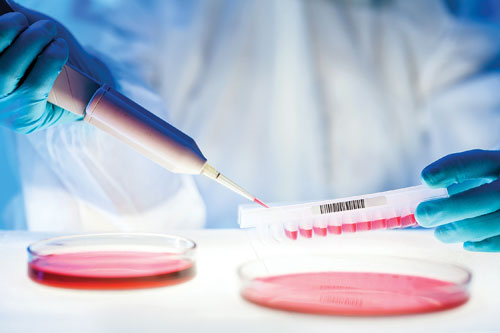
A biomarker or biological marker is a physical, chemical, or biological indication that can be measured accurately and reproducibly. It helps to differentiate between normal and abnormal processes, diseases, or other physiological conditions. There are different types of biomarkers ranging from blood pressure to body temperature, body mass index, biological molecules in blood and other body fluids, hormones, and genes.
Significance of Biomarkers
Unlike disease symptoms, biomarkers are objective measures that indicate biological conditions. Biomarkers have several crucial applications ranging from disease diagnosis, determining disease prognosis, monitoring therapeutic outcomes, predicting risks of diseases, developing personalized therapeutics, and assessing exposure to environmental chemicals and toxins. In drug development, biomarkers help to determine the effect of potential drug candidates on patients. Thus, biomarkers are integral to drug development. To improve the success rate of drug development, we need to have new biomarkers that offer more insights into cellular processes, disease pathways, and mechanisms of therapeutic action. Thus, biomarker discovery is crucial for drug development.
Cell-Based Functional Assays for Biomarker Discovery
Cell-based functional assays are often used for pharmacokinetic testing to determine the efficacy and toxicity of potential drug candidates. They are also used for biomarker discovery through biomarker profiling, analysis of biochemical pathways, and studying protein expression. While cell-based functional assays can be developed and validated, they are also commercially available. In fact, contract research organizations (CROs), such as PK CRO, offer diverse pharmacokinetics services using various cell-based pharmacokinetic assays. High-performance liquid chromatography (HPLC) is a robust technique that can not only detect impurities in drugs but also assess pharmacokinetic parameters. Thus, PK CROs and other institutes using pharmacokinetic assays should develop their HPLC lab.
The protein microarray technology powers the screening of molecules for biomarker discovery. This technology utilizes purified proteins or protein fragments synthesized or isolated from cells and body fluids. These proteins are then arrayed on microtiter plates that can immobilize other biomolecules being screened for biomarker discovery. Based on the application and the type of probe used, protein microarrays can be of the following types- antigen arrays, antibody arrays, lectin arrays, and peptide arrays.
Antigen arrays involve immobilizing disease-linked peptides and proteins on microarrays that can screen autoantibodies in patients. This can help discover novel autoantibody biomarkers. Such assays are used for screening autoantibodies in HIV patients. Along with autoantibodies, biomolecules such as cytokines, chemokines, mRNA, and growth factors can serve as reliable indicators of a disease. Antibodies microarrays such as sandwich ELISA can employ specific antibodies to screen potential biomarkers.
Similarly, lectin arrays rely on glycosylated proteins associated with diseases to discover biomarkers related to the disease. Apart from these assays, the pathogenic proteome array assembled from the proteins isolated from the pathogenic cells can help to detect reactive antibodies associated with pathogenic infections. For example, an E. coliK12 proteome microarray consisting of 4256 proteins encoded by the bacterium enabled the detection of biomarkers associated with inflammatory bowel disease. These assays are extensively used for biomarker discovery in different types of cancer and infectious diseases.
Conclusion
Protein biomarkers have emerged as a prominent biomarker discovery tool. It allows simultaneous screening of thousands of protein samples in cells, tissues, and cell lysates. It is a robust and versatile tool, with high throughput and high sensitivity being some of its advantages.







